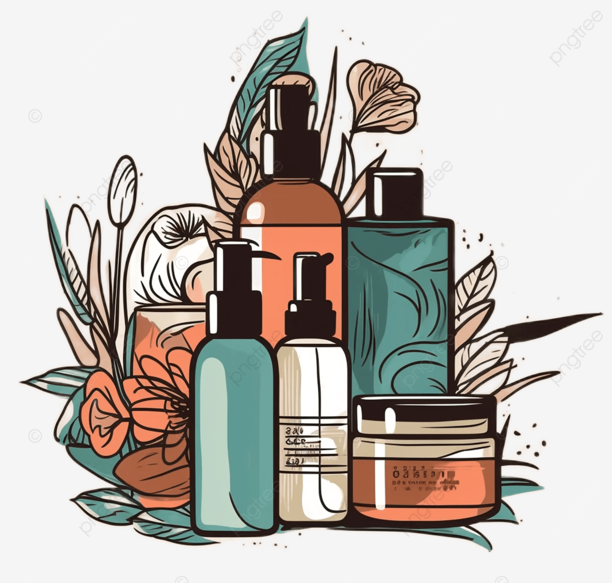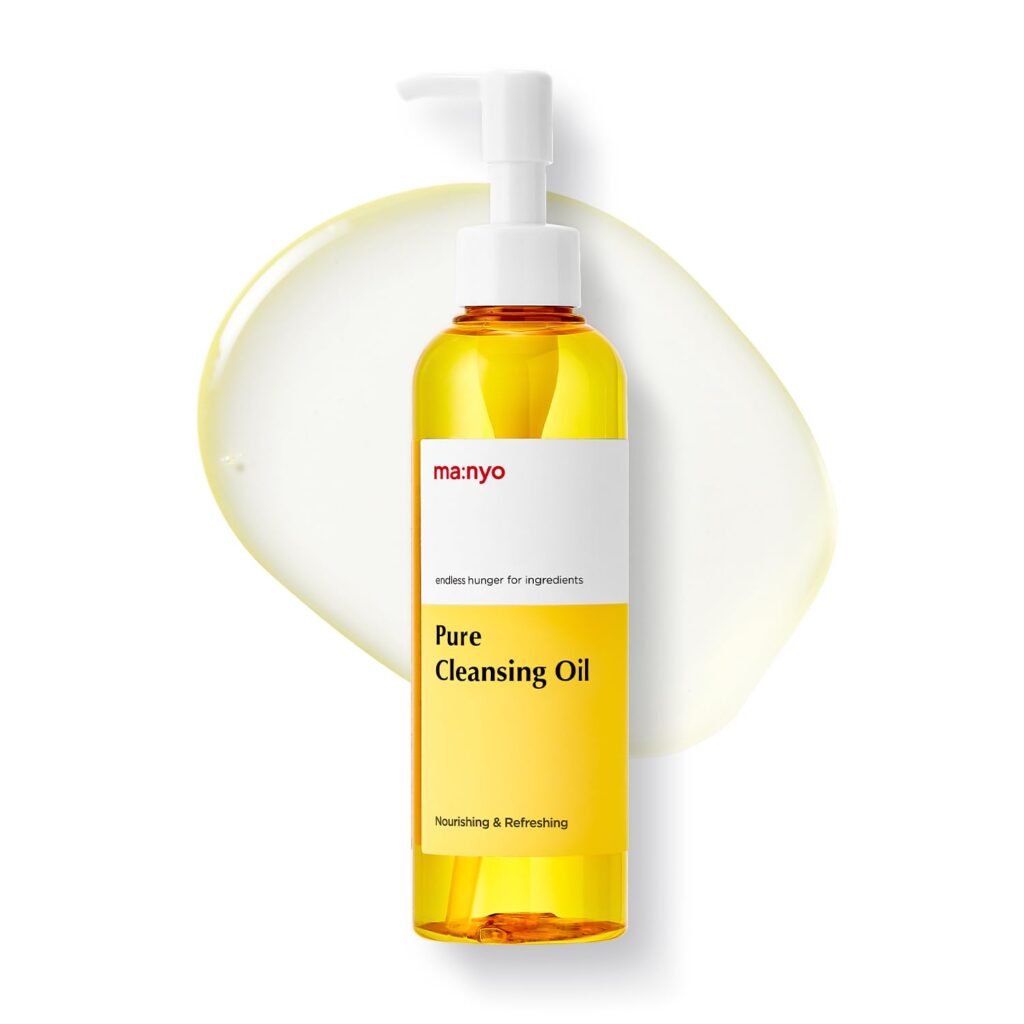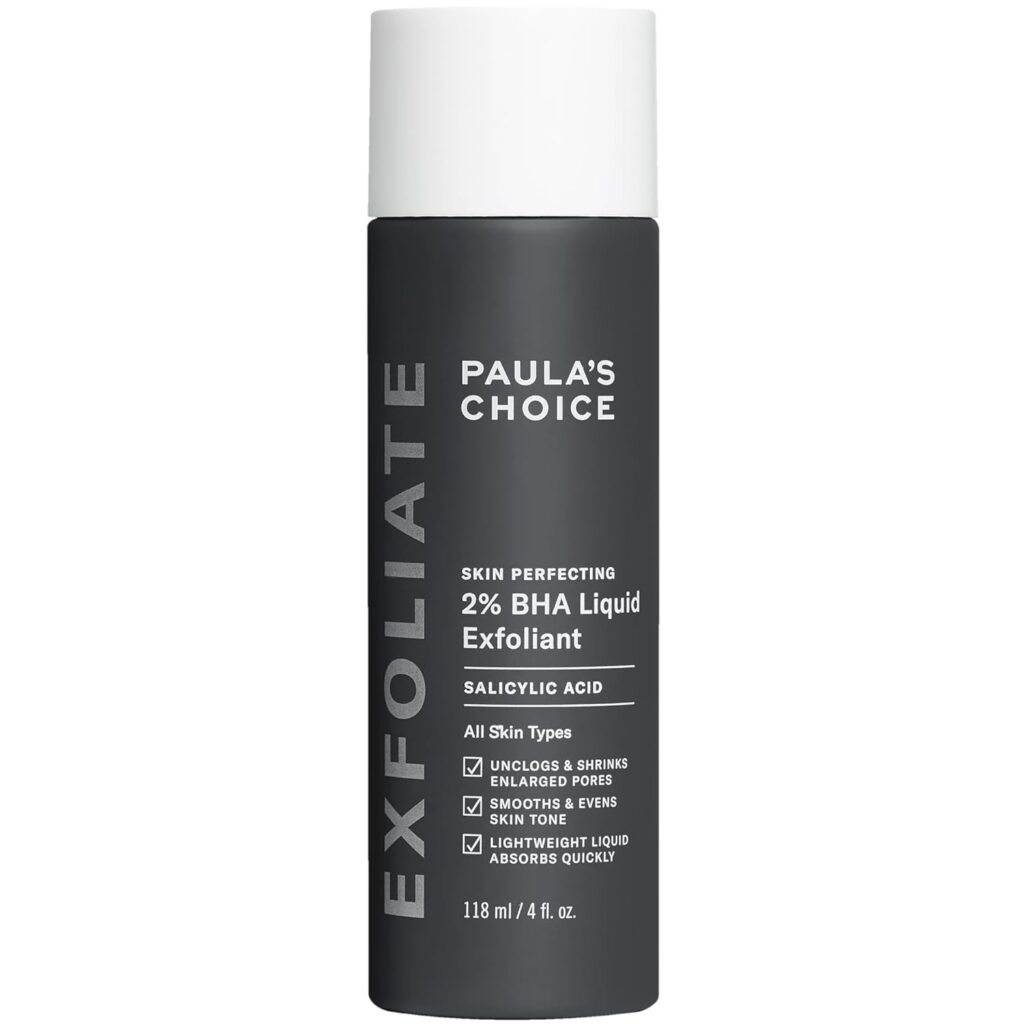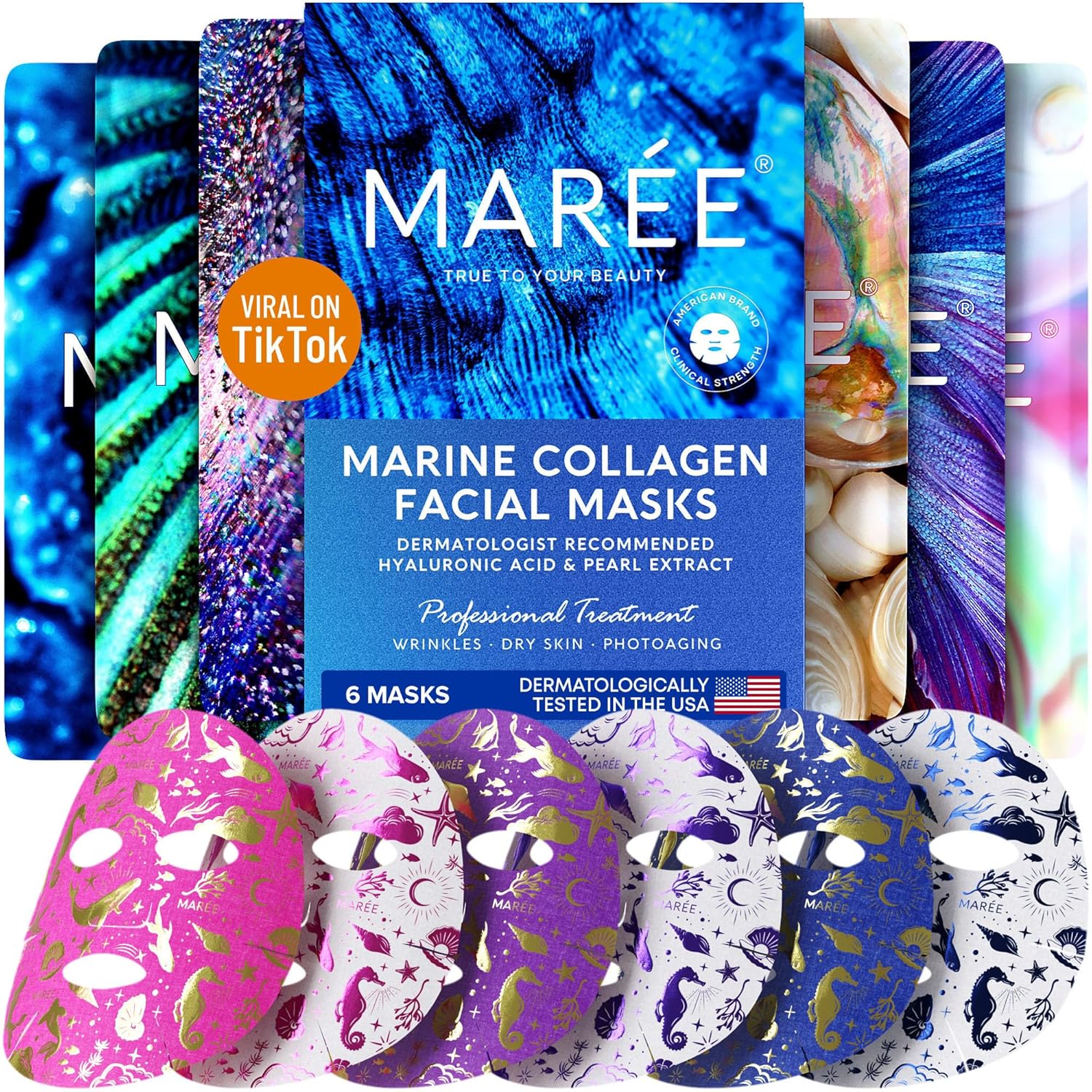I used to think slapping on some moisturizer was enough for my skin. My face started resembling a desert landscape before I realized I needed to step up my game. That’s when I discovered the 10-step skincare routine, and it’s been transformative for my skin health.
The 10-step skincare routine is a thoughtful, strategic approach to skin health that originated in South Korea. Each step serves a specific purpose, working together to create a harmonious balance for your skin. Here’s the details of this comprehensive skincare method.
The 10 Steps Explained
1. Oil Cleanse
The first step might seem counterintuitive, especially if you have oily skin. However, oil effectively dissolves oil-based impurities like makeup, sunscreen, and sebum. This step uses the principle of “like dissolves like” to deeply cleanse your pores without stripping your skin.
To oil cleanse, massage a small amount of cleansing oil onto dry skin for about a minute. This helps break down makeup, sunscreen, and excess sebum.
Rinse with lukewarm water or gently wipe off with a soft cloth. I use MANYO FACTORY Pure Cleansing Oil from Amazon. Works great!
2. Water-Based Cleanse
Following the oil cleanse with a gentle, water-based cleanser confirms that any remaining dirt and water-based debris are washed away. This double-cleansing method thoroughly cleanses your skin without over-drying it.
Choose a cleanser suitable for your skin type. Foam or gel cleansers work well for oily or combination skin, while cream or lotion cleansers are better for dry or sensitive skin. Massage the cleanser onto damp skin, then rinse thoroughly with lukewarm water.
3. Exfoliation
Exfoliation is crucial for sloughing off dead skin cells and promoting cell turnover. However, it’s important to remember that less is more – over-exfoliating can damage your skin barrier.
There are two types of exfoliants:
- Physical exfoliants: These include scrubs with small particles that physically remove dead skin cells.
- Chemical exfoliants: These use ingredients like AHAs (alpha-hydroxy acids) or BHAs (beta-hydroxy acids) to dissolve the bonds between dead skin cells.
Most people should exfoliate 1-3 times a week, depending on their skin type and the product used. Always follow the product instructions and listen to your skin.
I’m using Paula’s Choice Skin Perfecting 2% BHA Liquid Exfoliant.
4. Toner
Modern toners are far removed from the astringent, alcohol-based formulas of the past. Today’s toners balance your skin’s pH and prep it for the next steps in your routine.
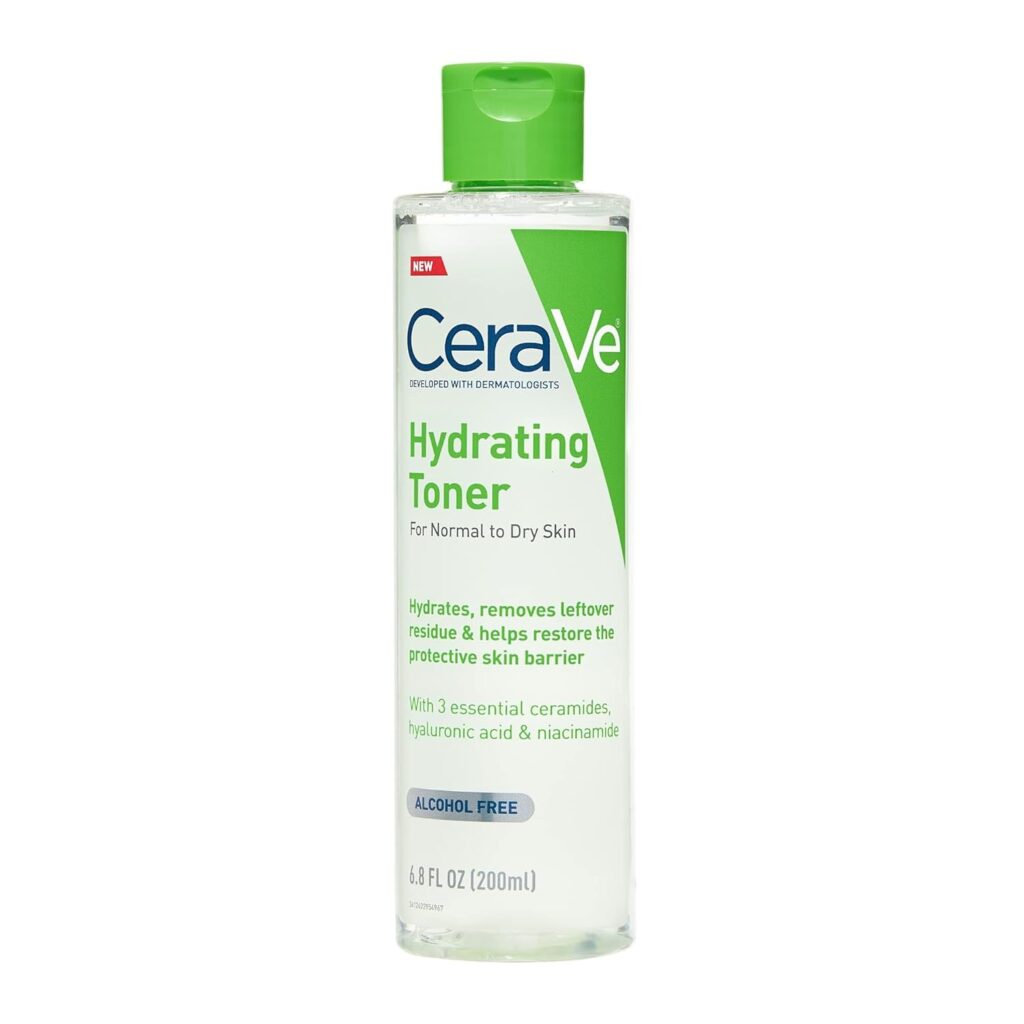
Toners often contain hydrating ingredients like hyaluronic acid or glycerin, along with soothing botanicals. They can also provide a first layer of hydration for dehydrated skin. Apply toner with clean hands or a cotton pad, gently patting it into your skin.
A good choice is CeraVe Hydrating Toner for Face. It can be found on Amazon, great price.
5. Essence
Shown here, Essence, is a lightweight, hydrating product packed with active ingredients that penetrate deep into your skin. It’s often described as a hybrid between a toner and a serum. This Korean Essence is a good choice that can be found on Amazon
Essences typically have a watery consistency and are designed to hydrate and prep the skin for better absorption of subsequent products. Apply essence by patting it gently into your skin with your hands.
6. Serum or Ampoule
This step targets specific skin concerns. Whether you’re looking to brighten, fight signs of aging, or combat acne, there’s a serum for that.
Serums are concentrated formulas packed with active ingredients.
Common serum ingredients include:
- Vitamin C for brightening and antioxidant protection
- Retinol for anti-aging and acne
- Niacinamide for pore refinement and oil control
- Hyaluronic acid for hydration
Apply a small amount of serum, focusing on areas of concern. Allow it to absorb fully before moving on to the next step.
7. Sheet Mask
While not an everyday step, sheet masks provide an intense boost of hydration and nutrients. They’re typically soaked in essence or serum and designed to fit the contours of your face.
Sheet masks force the active ingredients to penetrate deeper into the skin by creating an occlusive barrier. Use them 1-3 times a week, or whenever your skin needs an extra boost.
Leave the mask on for 15-20 minutes, then gently pat any remaining essence into your skin. I use MAREE Collagen Face Mask that I get on Amazon
8. Eye Cream
The delicate skin around your eyes needs special attention. Eye creams are formulated to address fine lines, puffiness, and dark circles.
They’re typically more concentrated and gentler than regular facial moisturizers.
Apply eye cream using your ring finger (it has the lightest touch) and gently pat it around the orbital bone. Be careful not to tug or pull at this delicate skin.
9. Moisturizer
A good moisturizer locks in all the beneficial ingredients from previous steps and strengthens your skin barrier. It helps prevent water loss and keeps your skin hydrated and plump.
Choose a moisturizer based on your skin type:
- Oily skin: Lightweight, oil-free gel moisturizers
- Dry skin: Rich, creamy formulas
- Combination skin: Medium-weight lotions
- Sensitive skin: Fragrance-free, gentle formulations
Apply moisturizer all over your face and neck, using gentle upward motions.
10. Sunscreen (AM) or Night Cream (PM)
In the morning, finish your routine with sunscreen to protect your skin from UV damage. Choose a broad-spectrum sunscreen with at least SPF 30.
Apply generously to all exposed skin, including your neck and ears.
At night, you might opt for a night cream or sleeping mask. These products are often richer and contain ingredients that support your skin’s natural regeneration process while you sleep.
Customizing Your Routine
The beauty of the 10-step routine comes from the flexibility. You don’t need to do all 10 steps every single day.
Listen to your skin and adjust accordingly.
Some days, you might skip the sheet mask or exfoliation. Other days, you might double up on hydrating products if your skin feels parched.
Skin Types and Concerns
Your skin type plays a crucial role in determining which products to use:
- Oily skin benefits from lightweight, oil-free formulations
- Dry skin craves rich, nourishing ingredients
- Combination skin needs a balanced approach
- Sensitive skin needs gentle, fragrance-free products
Specific skin concerns like acne, hyperpigmentation, or fine lines can be addressed through targeted serums and treatments.
The Hidden Benefits
While the primary goal of the 10-step routine is to improve skin health and appearance, there are some unexpected perks:
Mindfulness
The ritual of applying multiple products can be a form of self-care and meditation. Taking the time to focus on each step can help you slow down and be present in the moment.
Stress Relief
Taking time for yourself each morning and evening can help reduce stress levels. The act of caring for your skin can be soothing and calming, providing a moment of peace in a busy day.
Increased Body Awareness
As you become more attuned to your skin’s needs, you might find yourself more aware of your overall health. You may start noticing how factors like diet, sleep, and stress affect your skin.
Confidence Boost
As your skin improves, you might find yourself feeling more confident in your own skin. Clear, healthy skin can boost self-esteem and make you feel more comfortable in social situations.
Potential Pitfalls and How to Avoid Them
While the 10-step routine can work wonders, it’s not without it’s challenges:
Overuse of Products
Using too many active ingredients can irritate your skin. Start slowly when introducing new products, especially those with active ingredients like retinol or acids. Pay attention to how your skin reacts and adjust accordingly.
Time Commitment
The full routine can be time-consuming. Start slow and gradually build up.
You can do a simplified version on busy mornings and save the full routine for when you have more time.
Pro Tips for Mastering Your Routine
Layer Wisely
Apply products from thinnest to thickest consistency. This allows each product to penetrate effectively without being blocked by heavier formulas.
Patch Test
Always test new products on a small area before applying them to your entire face. This helps prevent potential allergic reactions or irritation.
Be Patient
It can take 4-6 weeks to see results from a new skincare routine. Skin cells take about 28 days to turn over, so give your products time to work before judging their effectiveness.
Stay Consistent
Consistency is essential in skincare. Stick with your routine, even if you don’t see immediate results.
Regular, long-term use of products is key to seeing improvements in your skin.
Listen to Your Skin
If a product or step isn’t working for you, don’t be afraid to adjust. Your skin’s needs can change because of factors like weather, hormones, or stress, so be flexible with your routine.
Beyond the Basics: Advanced Techniques
Once you’ve mastered the basics, consider incorporating these advanced techniques:
Facial Massage
Incorporate gentle massage techniques to improve circulation and product absorption. Use your fingertips or a tool like a jade roller or gua sha stone to massage your face while applying products.
Multi-Masking
Use different masks on different areas of your face to address multiple concerns simultaneously. For example, you might use a clay mask on your T-zone for oil control and a hydrating mask on your cheeks.
Skin Cycling
Rotate active ingredients throughout the week to maximize benefits and minimize irritation. For example, you might use retinol one night, exfoliating acids another night, and focus on hydration for the rest of the week.
Skincare Cocktailing
Mix and match products to create custom solutions for your skin. For example, you might mix a few drops of facial oil into your moisturizer for extra hydration.
Seasonal Adjustments
Adapt your routine to changing weather conditions and environmental factors. You might need richer products in winter and lighter formulas in summer.
These systems analyze factors like your skin type, concerns, lifestyle, and even your genetic makeup to suggest tailored skincare routines.
Microbiome-Focused Products
Formulations that work with your skin’s natural bacteria are gaining popularity. These products aim to support a healthy skin microbiome, which plays a crucial role in skin health and appearance.
Ingestible Skincare
Supplements designed to support skin health from within are becoming more sophisticated. These products often contain ingredients like collagen, antioxidants, and omega-3 fatty acids to promote skin health from the inside out.
Blue Light Protection
Products that shield skin from digital device emissions are being developed. As we spend more time in front of screens, protecting our skin from blue light has become a growing concern.
Sustainable and Waterless Options
Eco-friendly formulas and packaging to reduce environmental impact are becoming more common. Waterless products, which are more concentrated and need less packaging, are also on the rise.
Key Takeaways
- The 10-step routine is customizable and flexible
- Understanding your skin type and concerns is crucial for effective skincare
- Consistency and patience are key to seeing results
- Skincare is more than just products – it’s a form of self-care and mindfulness
- Stay open to new developments and techniques in the ever-evolving world of skincare
Frequently Asked Questions
What is a 10-step Korean skincare routine?
A 10-step Korean skincare routine is a comprehensive approach to skincare that involves multiple steps, including cleansing, toning, treating, and moisturizing. It’s designed to deeply nourish and protect the skin.
How long does a 10-step skincare routine take?
The time it takes to complete a 10-step skincare routine can vary, but typically it takes about 15-20 minutes in the morning and evening. Some steps, like sheet masks, are not done daily and can add extra time when used.
Is a 10-step skincare routine necessary?
A 10-step skincare routine isn’t necessary for everyone. The number of steps you need depends on your skin type, concerns, and personal preferences.
Some people achieve great results with fewer steps.
Can I use a 10-step routine if I have sensitive skin?
Yes, you can use a 10-step routine with sensitive skin, but it’s important to choose gentle, fragrance-free products and introduce new products slowly. You may need to adjust the frequency of certain steps, like exfoliation.
What’s the difference between essence and serum?
Essence is typically lighter and more watery than serum. It’s designed to hydrate and prep the skin for better absorption of subsequent products.
Serums are more concentrated and target specific skin concerns.
How often should I use a sheet mask in a 10-step routine?
Sheet masks are typically used 1-3 times a week in a 10-step routine, depending on your skin’s needs. They’re not meant for daily use as they provide an intense boost of hydration and nutrients.
Can men use a 10-step Korean skincare routine?
Absolutely! Skincare is for everyone, regardless of gender.
Men can benefit from a comprehensive skincare routine just as much as women.
They may need to adjust some steps based on their specific skin needs.
Is double cleansing necessary in a 10-step routine?
Double cleansing (using an oil-based cleanser followed by a water-based cleanser) is a key part of the 10-step routine. It’s particularly beneficial if you wear makeup or sunscreen, or if you have oily skin.
How long before I see results from a 10-step routine?
It typically takes about 4-6 weeks to see noticeable results from a new skincare routine. This is because it takes about a month for your skin cells to completely turn over.
Can I skip steps in a 10-step routine?
Yes, you can skip steps that don’t work for your skin or that you don’t have time for. The 10-step routine is meant to be flexible and customizable to your needs.
